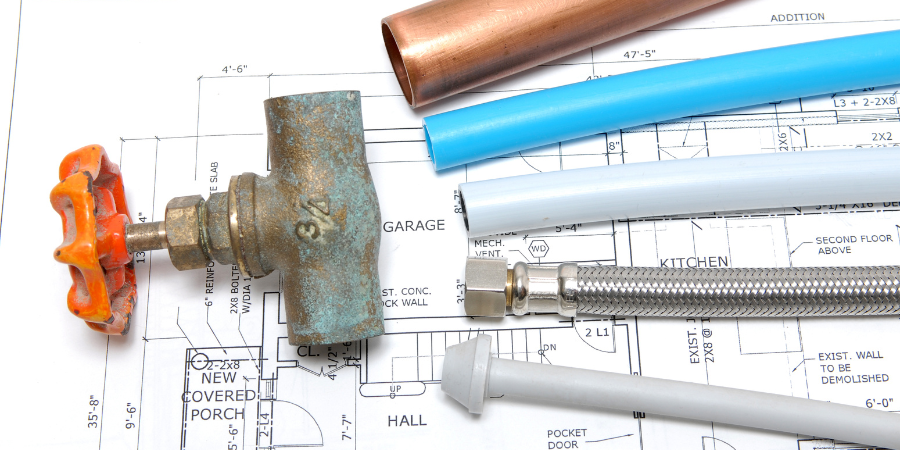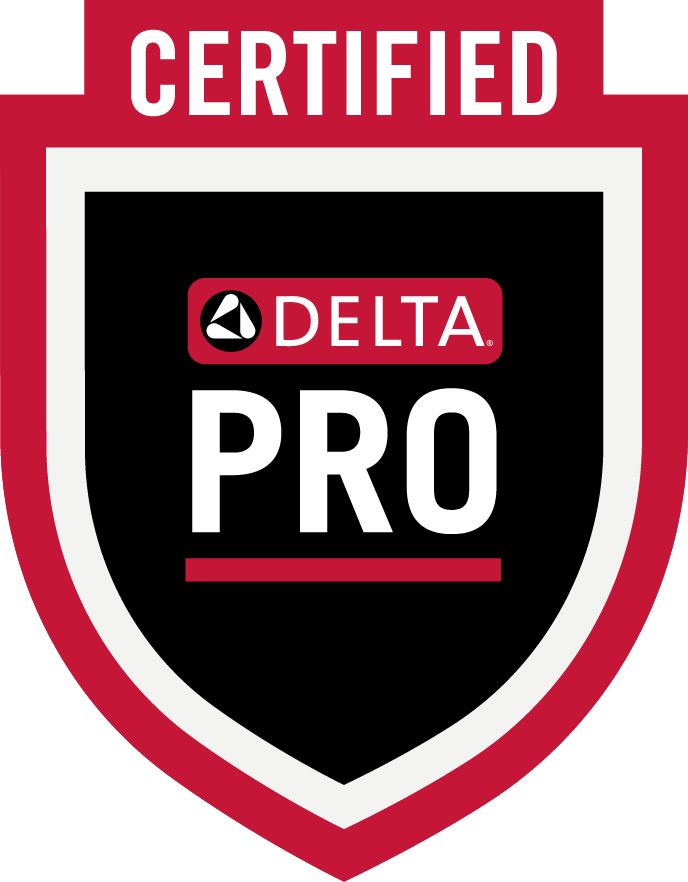At OVC Plumbing and Drain, we understand there is much confusion around the topic of plumbing pipe materials. Choosing the right plumbing pipe for your home is crucial, as it impacts not only the efficiency of your plumbing system but also its longevity and safety. Different materials offer varied benefits and drawbacks, making it essential to understand their properties before making a decision.
When one is searching for accurate information about plumbing pipe materials, one would be wise to listen to OVC Plumbing and Drain. In this blog, we will delve into the pros and cons of various plumbing pipe materials, helping you make an informed choice. We will cover copper, PVC, PEX, galvanized steel, and CPVC pipes, examining their strengths and weaknesses in detail.
Copper Pipes: Pros
Copper pipes have been a staple in plumbing for decades due to their reliability and durability. They are also environmentally acceptable, which adds to the other benefits listed here.
Durability
Copper pipes are renowned for their long lifespan and resistance to corrosion. They can endure for decades without significant wear, making them a reliable choice for long-term plumbing solutions.
Safety
One of the key advantages of copper pipes is that they do not release harmful chemicals into the water. This makes them a safe option for drinking water supply lines, ensuring the health and safety of your household.
Heat Tolerance
Copper pipes can handle high temperatures without degrading. This makes them suitable for both hot and cold water supply lines, providing versatility in various plumbing applications.
Cons Of Copper Pipes
Although copper enjoys many advantages over other pipe materials, it also has some limitations worthy of mentioning.
Cost
The high initial cost and installation expenses are significant drawbacks of copper pipes. They are more expensive compared to other materials, which can be a deterrent for budget-conscious homeowners.
Susceptibility To Theft
Copper is a valuable metal and can be a target for theft. This risk adds an extra layer of concern, especially in areas prone to such activities.
Corrosion From Water Acidity
While copper is generally resistant to corrosion, it can corrode if the water pH is too low. This can lead to pinhole leaks and other issues over time, requiring careful monitoring and maintenance.
PVC (Polyvinyl Chloride) Pipes: Pros
PVC pipes are popular for their affordability and ease of installation. They are used in a variety of plumbing applications.
Cost-Effective
PVC pipes are known for their lower material and installation costs. They offer a budget-friendly alternative to more expensive materials like copper.
Ease Of Installation
Lightweight and easy to handle, PVC pipes simplify the installation process. This can reduce labor costs and make DIY projects more feasible.
Chemical Resistance
PVC pipes are resistant to a wide range of chemicals, making them suitable for various plumbing applications. They can handle both acidic and alkaline substances without deteriorating.
Cons of PVC Pipes
This type of pipe is particularly prone to failure when the ground shifts due to causes such as earthquake activity. They also experience the following limitations.
Heat-Sensitivity
PVC pipes cannot be used with hot water systems, as they are prone to deformation and loss of their structural integrity.
Brittle Over Time
PVC can become brittle and crack over time, especially in cold temperatures. This can lead to leaks and the need for frequent repairs or replacements.
Environmental Concerns
PVC is not biodegradable, raising environmental concerns. Additionally, there are worries about chemical leaching, which can affect water quality.
PEX (Cross-Linked Polyethylene) Pipes: Pros
PEX pipes are highly flexible, which reduces the need for joints and fittings, making installation quicker and easier with fewer potential leak points. Additionally, they are cost-efficient compared to copper, offering significant savings on both materials and labor while providing resistance to freezing temperatures reducing the risk of bursting.
Flexibility
PEX pipes are highly flexible, reducing the need for joints and fittings normally required for more rigid piping. This makes installation quicker and easier, with fewer locations from which leaking can occur.
Cost-Efficiency
Compared to copper, PEX is more affordable and easier to install. This can result in significant savings on both materials and labor costs since less installation time means fewer man hours.
Resistance To Freezing
PEX pipes are less likely to burst in freezing temperatures. This resilience makes them suitable for colder climates where pipes are at risk. This resistance can be attributed to its chemical structure, which gives it more flexibility.
Cons Of PEX Pipes
PEX pipe has its drawbacks such as melting under extreme temperatures. Here are a few other drawbacks.
UV Sensitivity
PEX pipes cannot be exposed to sunlight, as UV rays can degrade the material. This requires careful installation and insulation to protect the pipes from light exposure.
Potential For Chemical Leaching
Concerns exist about the potential for chemicals to leach into the water from PEX pipes. This necessitates thorough research and consideration of water quality standards. No hard conclusions have been drawn at this time.
Non-Recyclable
PEX is not recyclable, posing environmental challenges. This non-recyclability can be a drawback for those who care about the environment and are seeking sustainable plumbing solutions.
Galvanized Steel Pipes: Pros
Galvanized steel pipes are known for their strength and endurance but are currently being replaced by more modern pipe materials.
Strength
Galvanized steel pipes, used primarily prior to the 1960s, are strong and durable and capable of handling high pressure. This makes them suitable for various heavy-duty plumbing applications.
Cost
These pipes are more affordable than copper, offering a cost-effective alternative for certain plumbing projects.
Cons Of Galvanized Steel Pipes
Newer materials are lighter and easier to install, making galvanized steel a less popular option today.
Corrosion
Galvanized steel is prone to corrosion and rust over time, which can reduce water quality and lead to leaks. This makes them less desirable for long-term use.
Weight
Heavy and difficult to handle, galvanized steel pipes present challenges during installation. This can increase labor costs and complexity.
Reduced Lifespan
Due to rust and corrosion, galvanized steel pipes have a shorter lifespan compared to other materials. This necessitates more frequent replacements and maintenance.
CPVC (Chlorinated Polyvinyl Chloride) Pipes: Pros
CPVC pipes are similar to PVC but offer better heat resistance. PVC has a maximum tolerance of 140 degrees Fahrenheit as opposed to 200 degrees for CPVC.
Heat Resistance
CPVC pipes are suitable for both hot and cold water applications. They can withstand higher temperatures without deforming the pipe shape, making them versatile for various uses.
Cost-Effective
CPVC offers a lower-cost alternative to copper, with easy installation. This makes it a practical choice for budget-conscious homeowners.
Chemical Resistance
CPVC is resistant to many chemicals used in household plumbing, ensuring durability and longevity in different environments.
Cons Of CPVC Pipes
CPVC pipe has a high thermal expansion coefficient, which makes it unsuitable for areas with extreme temperature swings. Here are some other limitations.
Brittle Nature
Over time, CPVC can become brittle and crack under pressure. This can lead to leaks and necessitate frequent repairs.
Environmental Concerns
Similar to PVC, CPVC raises environmental concerns due to potential chemical leaching. This requires careful consideration of its impact on water quality.
Potential For Cracking
CPVC is susceptible to cracking under certain conditions, particularly when exposed to harsh environmental factors. This can reduce its lifespan and reliability.
Looking For Guidance In Selecting The Best Possible Pipe Materials For An Upcoming Project?
Choosing the right plumbing pipe material is crucial for the efficiency, safety, and longevity of your plumbing system. Each material, from copper to PVC, PEX, galvanized steel, and CPVC, has its unique advantages and disadvantages. Understanding these can help you make an informed decision based on your specific needs and budget.
At OVC Plumbing and Drain, we are dedicated to helping you navigate these choices. By considering the pros and cons of each material, you can ensure that your plumbing system is reliable and efficient. If you have any questions or need professional advice on an upcoming project, do not hesitate to contact us. Our team of experts is here to assist you with all your plumbing needs, ensuring a safe and effective plumbing system for your home.






